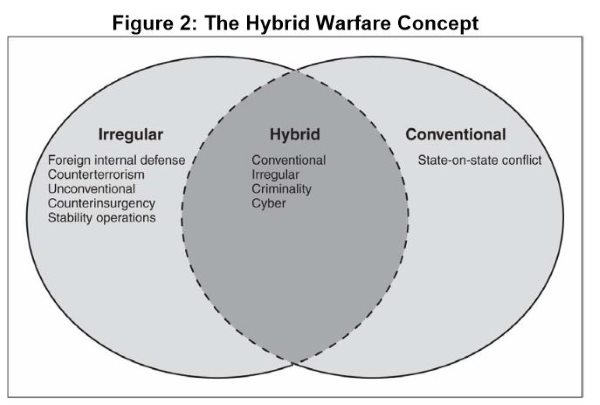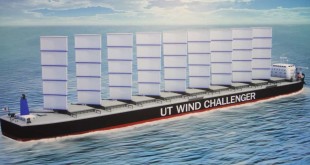The US Navy announced that it will deploy its leading-edge early-warning surveillance aircraft E2D to Japan in February. The Hawkeye will deploy from the USS Ronald Reagan, the aircraft carrier assigned to the Asia-based Seventh Fleet. The Hawkeye can detect cruise-missile and ballistic-missile launches from long range, potentially allowing for the missile to be redirected or shot down. The aircraft, can detect stealth aircraft like the Chinese Chengdu J-20 and the Russian Sukhoi T-50 as well as coordinate other ships and aircraft during combat. In a combat scenario, a Hawkeye can “act as a networked battle management platform, guiding other aircraft and ships to fire on incoming threats.”
The US Department of State has approved sale to Japan of four Northrop Grumman E-2D. The Japan’s nation-specific configuration, which includes a “wet wing” that will increase the endurance of the land-based aircraft from some 5h to 8h. This move could enhance protection of US and Japanese carriers from Stealth planes and cruise missiles of China. It would also strengthen the US-Japan Alliance to keep eye on Chinese activities in the region such as building of artificial islands in the South China Sea.
Meanwhile, the current E-2C models are playing an essential role in the Middle East, launching from the USS George Bush to serve as flying command posts and air traffic control for the ongoing strikes against the self-proclaimed Islamic State.
China has launched new model of Y-7J (03) carrier-capable tactical airborne early warning (AEW) aircraft. According to Military-informant.com. report, the prototype of the new aircraft was established on the model aircraft carrier in Wuhan Province. The model aircraft carrier is estimated at being 300 meters (984 feet) long and 80 meters (262 feet) wide. The model is complete with a helicopter landing pad and a model of a carrier-borne aircraft
The E-2D is the latest variant of the Hawkeye carrier-based AEW&C aircraft that has been developed for countering the threats of stealth aircrafts and cruise missiles. The E-2D is derived from earlier models of the AEW&C platform, with the current model, including more powerful APY-9 radar, as well as new avionics and a glass cockpit. An aerial refuelling capability is being developed to provide the USN aircraft with endurance of 8h when operating at sea.
The US Navy is the primary operator of the Hawkeye, the full E-2D requirement for the USN is 75 aircraft, with 25 aircraft delivered to date. Five aircraft will be handed over in 2016, three of which have been already rolled out; the next one to be received by the navy is the first produced under the 2014 contract, he says. first flight is scheduled for December 2016, Jay Mulhall, director of business development for the E-2D programme at Northrop said. Deliveries are set to be complete by 2025. These new aircraft will replace E-2C’s that have been in service since the early 1970s
Five Northrop Grumman E-2D Advanced Hawkeye airborne early warning and control (AEW&C) aircraft have been deployed on board the US Navy’s Nimitz-class USS Theodore Roosevelt carrier, marking the first operational mission for the aircraft. Meanwhile the USN has successfully carried out its first deployment of an E-2D squadron, which returned from a nine-month tour of the service’s 5th, 6th and 7th Fleet areas of responsibility at the end of 2015.
Increasing threat to Aircraft Carriers
China’s is on the path to rapid military modernization, including building immense inventory of land-based missiles consisting of new generations of advanced, long-range Anti-Ship Cruise Missiles, and the CSS-5 Mod 5 (DF-21D) anti-ship ballistic missile. The CSS-5 Mod 5 gives the PLA the capability to attack large ships, including aircraft carriers, at ranges greater than 1,000 nautical miles and with a maneuverable warhead.
It has also carried out demonstrations of its stealth aircrafts like the Chengdu J-20 and Shenyang J-31. China is the second nation to have two stealth fighter designs: The Chengdu Aircraft Industrial Corporation (CAC) ‘J-20’ and Shenyang Aircraft Corporation (SAC) ‘J-31’. The J-20 is slightly faster, with a maximum speed of Mach 2.5 compared to Mach 2 for the J-31. Both sport a combat radius of approximately 2000km (1242 miles). They could even carry long-range cruise missiles to attack scattered U.S. bases and aircraft carriers in the region.
Counter Stealth APY-9 Radar
APY-9, has increased the range for the E-2D by about 40% over the range of the E-2C. Calculated for volume, the area scanned is nearly double for the E-2D. The wider scan coverage makes the E-2D much more capable in tracking both air and surface targets simultaneously. “The E-2D Advanced Hawkeye’s
APY-9 radar provides greatly increased capability to detect and track targets earlier and more accurately in littoral, overland and overwater environments than the E-2C aircraft’s APS-145, protecting the carrier strike group from threat aircraft and cruise missiles,” according to US Navy.
APY-9, is a UHF-band electronic scanning array radar, the most significant capability of UHF-band radars operating between frequencies of 300MHz and 1GHz (wavelengths between 10 centimeters and one-meter-long), is their ability to detect stealth aircrafts like the Chengdu J-20, Shenyang J-31, and Sukhoi PAK-FA or United States’ own Lockheed Martin F-22 Raptor and tri-service F-35 Joint Strike Fighter.
Low frequency UHF Band radars have highly effective counter stealth capability, “When the wavelength of the incident electromagnetic (EM) wave is comparable to the physical dimension of the object, there is a resonance effect between the direct reflection from the target and scattered waves which “creep” around it. This results in enhancement of RCS and detectability of stealth targets”
The traditional low frequency UHF and VHF-band radars have poor resolution in angle and range compared to high frequency radars, that has historically prevented these radars from providing accurate targeting and fire control, however APY-9 by applying a combination of advanced electronic scanning capability together with enormous digital computing power in the form of space/time adaptive processing, have overcome the traditional limitations of UHF-band radars according to Northrop Grumman and Lockheed Martin.
E-2D: One of the critical system in cruise missile defence
The E-2D can also be one of the critical system in cruise missile defence. The cruise missile defence requires a multi-layered approach, wherein the Launch platforms must be detected, tracked and engaged, and if this fails, the cruise missiles must be detected, tracked and engaged.
Operating from an altitude above 25,000ft, the Hawkeye can warn the naval task force of approaching air and missile threats and provides threat identification and positional data to fighter aircraft. Secondary roles include strike command and control, surveillance, guidance of search and rescue missions and as a relay to extend the range of communications.
The onboard communications and data processing subsystems are capable of collecting and distributing the tactical picture to command centers and other assets for network-centric operations. The E-2D collects its own track data and assembles data from other ships and aircraft to form a common operational picture of friendly, adversary and unknown contacts in the area. With a common operational picture, the E-2D can function as a central hub of a network for distributing track and targeting data among numerous platforms.
U.S. Pacific Command and the Missile Defense Agency (MDA) have already successfully demonstrated the integrated air and missile defense capability of AEGIS Combat System aboard guided-missile destroyer USS John Paul Jones (DDG 53).
Cooperative Engagement Capability
The E-2D combats the threat of stealth aircrafts and cruise missiles through Cooperative engagement capability and through its Naval Integrated Fire Control – Counter Air (NIFC-CA).
Under the NIFC-CA ‘From the Air’ (FTA) construct, the APY-9 radar can act as a sensor to cue Boeing F/A-18E/F Super Hornets fighters to fire Raytheon AIM-120 AMRAAM air-to-air missiles at the targets, via the Link-16 datalink.
Under the NIFC-CA ‘From the Sea’ (FTS) construct, the APY-9 also acts as a sensor to guide Standard SM-6 missiles launched from Aegis cruisers and destroyers against targets located beyond the ships’ SPY-1 radars’ horizon via the Cooperative Engagement Capability datalink.
The USN is also integrating an in-flight refuelling capability into the E-2D, giving it greater range and endurance. The first aircraft with the refuelling capability is expected to be ready around 2019, and all aircraft will be retrofitted with the system. Navy has successfully conducted a critical design review of its AR capability, becoming closer to reality.
Regional Cooperation
The US Department of State has approved USD1.7 billion sale to Japan of four Northrop Grumman E-2D Advanced Hawkeye airborne early warning and control (AEW&C) aircraft, 10 engines (eight installed and two spares) and four APY-9 radars. Tokyo would use the E-2D to provide AEW&C situational awareness of air and naval activity in the Pacific region and to augment its existing 13-aircraft E-2C Hawkeye AEW&C fleet, according to the announcement.
Japan had placed an order for a second Northrop Grumman E-2D Advanced Hawkeye airborne early warning and control aircraft through a $163 million deal with the US government. A $151 million contract for the first E-2D was signed by Tokyo in November 2015, and both aircraft are expected to be delivered in 2018.
The first Northrop Grumman E-2D Advanced Hawkeye airborne early warning aircraft for Japan is in the process of being built, and the manufacturer has been awarded a contract worth $286 million to perform modifications to take it to Tokyo’s specifications.
Japan bases its aircraft on the land, instead of Aircraft carrier, so can effectively take-off with the extra fuel in a “wet wing” configuration, which will allow it to operate for up to 8h, instead of a standard 5h. CPI Aerostructures is supplying wing components for Japan’s E-2D Advanced Hawkeye aircraft through a contract issued by Northrop Grumman.
“The main difference is that the US Navy chose to go with in-flight refuelling that allows the E-2D to deploy off the [aircraft] carrier and refuel for longer missions,”said Jay Mulhall, Northrop’s director of global strategy and mission solutions.
Defense Minister Gen Nakatani during a debate in Japan’s Diet. Nakatani revealed during a question-and-answer session June 29 in the House of Representatives that Japan was now “studying” adopting NIFC-CA to counter China’s CJ-10 Long Sword cruise missile, which has become a major concern to Japan, particularly when launched from the Xian H-6 version of the Soviet Tupolev Tu-16 bomber.
NIFC-CA based on the US Navy’s cooperative engagement capability (CEC) network, shall allow datalinks to transmit targeting information between the E-2D Hawkeye airborne warning and control aircraft and Japan Maritime Self-Defense Force (JMSDF) six Aegis ships as well as operate in concert with US Navy.
“Even just for Japan’s own defense it would be a significant development for Japan to buy into the system, and obviously it would greatly enhance the operation and regional power projection of the alliance,” Corey Wallace, a security policy analyst at the Graduate School of East Asian Studies at Freie Universität.
References and Resources also include:
- https://www.flightglobal.com/news/articles/e-2d-to-carry-out-aerial-refuelling-test-in-2016-422309/
- https://www.flightglobal.com/news/articles/northrop-contracted-for-japanese-e-2d-modifications-420659/
- https://sputniknews.com/asia/201701061049307282-us-navy-aircraft-japan/
- http://defence-blog.com/news/new-carrier-capable-tactical-airborne-early-warning-aircraft-spotted-in-china.html
 International Defense Security & Technology Your trusted Source for News, Research and Analysis
International Defense Security & Technology Your trusted Source for News, Research and Analysis


